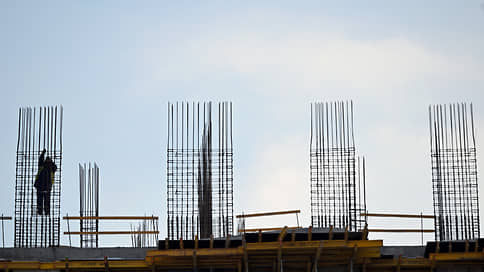Assets of market closed real estate mutual funds grew by a third, to 323 billion rubles
[ad_1]

At the end of last year, the assets of market closed real estate mutual funds grew by a third, exceeding 323 billion rubles. The main driving force was funds available to unqualified investors. However, in the second half of the year, the tough monetary policy of the Bank of Russia, which raised the key rate more than twice, acted as a limiting factor. This has led to an increase in the attractiveness of deposits and money market funds.
In 2023, the assets of market closed-end real estate mutual funds reached 323.5 billion rubles, which is 33% higher than the previous year. The management company “PARUS Asset Management” provides such data in its review. At the same time, the assets of all closed-end real estate mutual funds available to unqualified investors grew by 55% over the year, to RUB 144 billion. That is, the growth of the sector was ensured by citizens—unqualified investors who invested in shares of closed-end real estate mutual funds.
However, in 2022, the growth of assets of all funds was more significant – 78%. According to the project director of the Management Company “Modern Real Estate Funds” Ekaterina Vasilchenko, the effect of a higher calculation base worked. Also, the slowdown in the growth rate of real estate funds’ assets was associated with a reduction in the volume of raised funds. According to PARUS Asset Management, net attractions to all funds over the past year amounted to about 72 billion rubles, while a year earlier they exceeded 92 billion rubles. (see “Kommersant” dated February 27, 2023). In addition, the termination of the PNK-Rental closed-end mutual fund with a volume of 5.3 billion rubles, which occurred in the second quarter of 2023, had a negative impact on the final results (see “Kommersant” dated July 26, 2023).
In addition, last year, against the backdrop of strong growth in the stock market, investors increased investments in risky assets, including open-end and exchange-traded mutual funds. According to Kommersant, the net inflow of funds into such funds amounted to 192 billion rubles at the end of the year—the third largest result for the collective investment industry (see Kommersant on January 9).
Ekaterina Vasilchenko notes a growing trend of client interest in funds intended for qualified investors. Such funds have wider investment opportunities, in particular they can use credit funds. According to Elena Mikhailova, head of marketing research and analytics at PARUS Asset Management, over the year the assets of such funds grew by 19.3%, to 180 billion rubles.
The investment preferences of Russians are also influenced by the tightening monetary policy of the Bank of Russia.
In the second half of 2023, the Central Bank raised the rate five times by a total of 8.5 percentage points, to 16%. Following this, deposit rates and demand for them from individuals increased. According to the Central Bank, in August-December 2023, 2.1 trillion rubles were attracted to retail deposits. According to the Central Bank, the maximum rate on deposits of the largest banks has exceeded 13% per annum since November 2023, and by mid-January it approached 15% per annum. It is difficult for closed-end mutual funds to compete with high bank rates over a short horizon.
According to Elena Mikhailova, the average return on real estate closed-end mutual funds from rental payments was 9–11% at the end of last year. “Real estate mutual funds, the shares of which are not limited in circulation, are the most conservative instrument and show relatively stable profitability, but if until mid-summer their 11% per annum was an interesting indicator, then with the increase in the key rate to 16% this situation has changed,” notes the general director “Accent Asset Management” Ivan Temichev.
Regarding the prospects for this year, market participants express cautious optimism based on expectations of an easing of the monetary policy of the Bank of Russia. Elena Mikhailova does not rule out the first reduction of the key rate in the second quarter, and by the end of the year – reaching 10%. This will support the real estate fund market in light of the high sensitivity of private investors to the level of rates. “The growth of the closed-end mutual fund segment in 2024 could reach 70–100 billion rubles,” estimates Ms. Mikhailova.
At the same time, the growth of real estate funds will occur due to segments in which there is a shortage of quality properties. These, according to Dmitry Yartsev, deputy general director of KSP Capital Asset Management, include data centers, recreational infrastructure, and projects in the agricultural sector. The SFN management company still considers warehouse real estate to be the most promising area. “Warehouse real estate will also continue to rise in price due to limited supply and high demand, including due to the continued growth of e-commerce in Russia,” notes Ekaterina Vasilchenko.
[ad_2]
Source link





